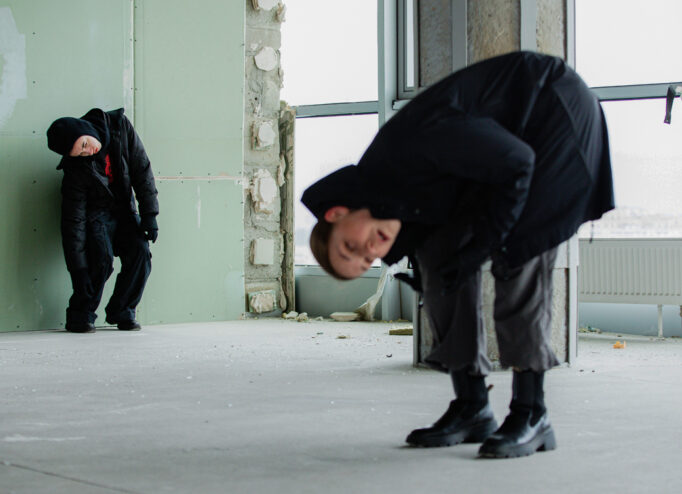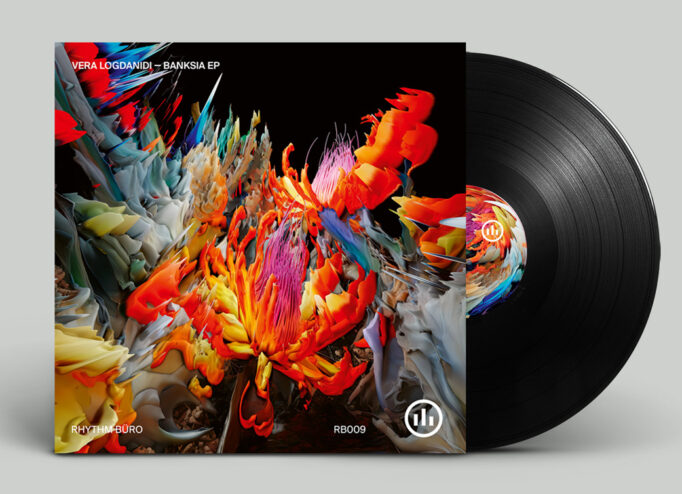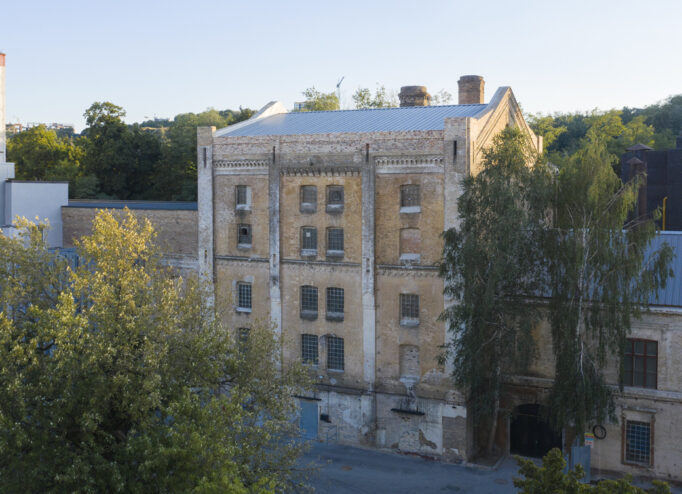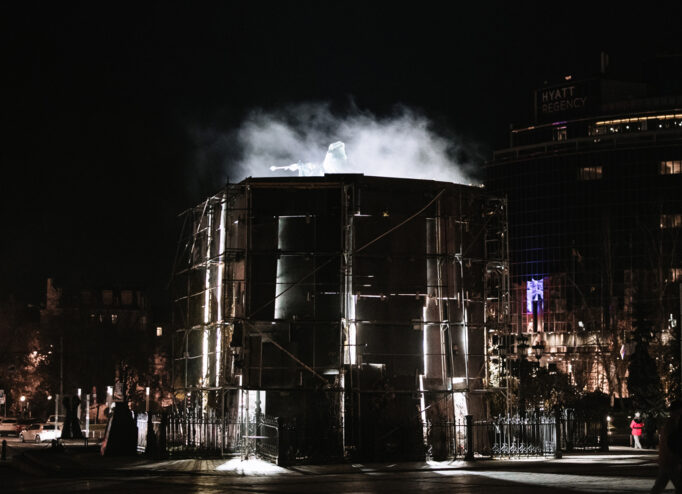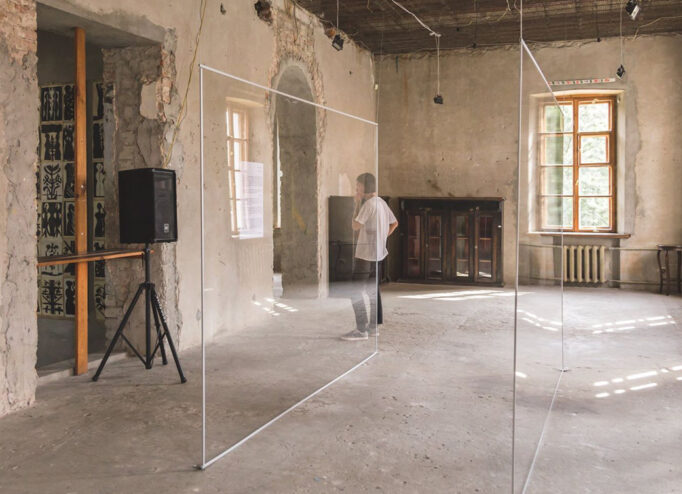Slava Balbek was one of the first to join the creation of Module of Temporality. At the request of don’t Take Fake, his balbek bureau developed the architectural concept of MOT, based on 27 module containers, and the interior of the space. But for Balbek, this collaboration is not just another high-profile and important project, but an opportunity to finally complete the work started 10 years ago.
On the eve of the opening of Module of Temporality, we talked to Slava about the uniqueness of container architecture, “enormous engineering difficulties” in the construction of MOT and his personal feelings about this project. And we also found out how the war affected the balbek bureau, what new direction will be developed in the already large-scale project RE:Ukraine, whether the idea of the Open Fracture is going to be realized and whether foreign architects create competition to Ukrainian ones.
MOT is a two-story, 417-square-meter structure made of 27 metal containers-modules. They can be disassembled, transported and reassembled in less than 10 days. MOT can hold up to 100 people at a time. The space contains several different sized rooms. Due to the low ceiling (which in some modules does not exceed 2.3 meters), MOT retains a certain sense of pressure and discomfort — something that people experience when hiding in shelters during an air raid. The main exhibition space is an open space with a height of more than 4 meters, which the visitor does not expect to see when looking at the structure from the outside.

MOT and the uniqueness of container architecture
— We’re talking at the beginning of 2023. How would you briefly describe the past year, what changes have occurred in your professional life?
— The year was difficult on all levels: both personal and professional. A year of self-discovery, I would say. The year of discovering the ultimate potential and understanding the horizon of possibilities: where you want to go, who you want to be, what your values are. The year of discovering your friends, the year of discovering the world around you. It was very difficult, hard, but it was interesting, and this curiosity has not died away.
— Right now you and don’t Take Fake are working on MOT, a temporary art space. How did this collaboration begin?
— We started working with them six or eight years ago. They came back to this design several times with different proposals. As of today, we have almost finished the last version of Module of Temporality with them.
For us, this architecture is like a three-dimensional temporal plane. You see a different architecture from different angles every time — that’s the moment of temporality. This is a fascinating project, for me as well. It’s a project I’ve devoted a large part of my conscious architectural practice to. I started my practice 15 years ago, and I’ve been working on this project for 10 years. You can imagine how important it is to finish it.
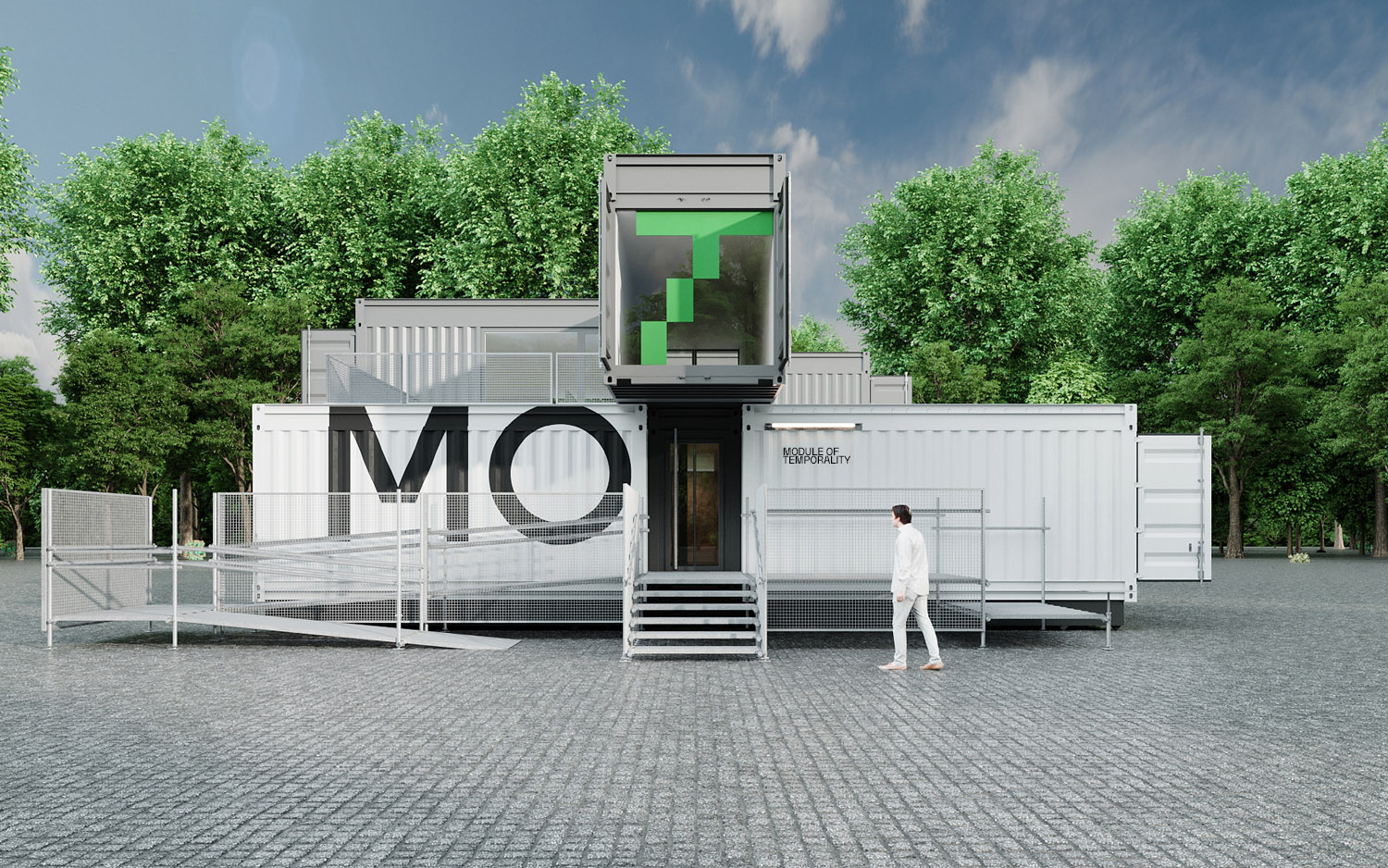
— I was just wondering why you decided to give it the time you obviously have so little of…
— We have to finish unfinished work. For me, that’s the basic story. If there is an opportunity and you can make the effort to see it through, even if this project is 10 years old, you have to find the strength not to leave something unfinished.
— What is the peculiarity of the construction? It’s a space made of shipping containers, right?
— Yes, shipping containers, 27 units.
— What were you visually inspired by when you designed it?
— Container architecture is unique in that it has no expiration date. It is what was 25 years ago and will be 100 years from now.
Containers and architecture made of them are what is shown in movies about the future and what was in the past. It is a module from which architects create different forms and spaces that go beyond trends.
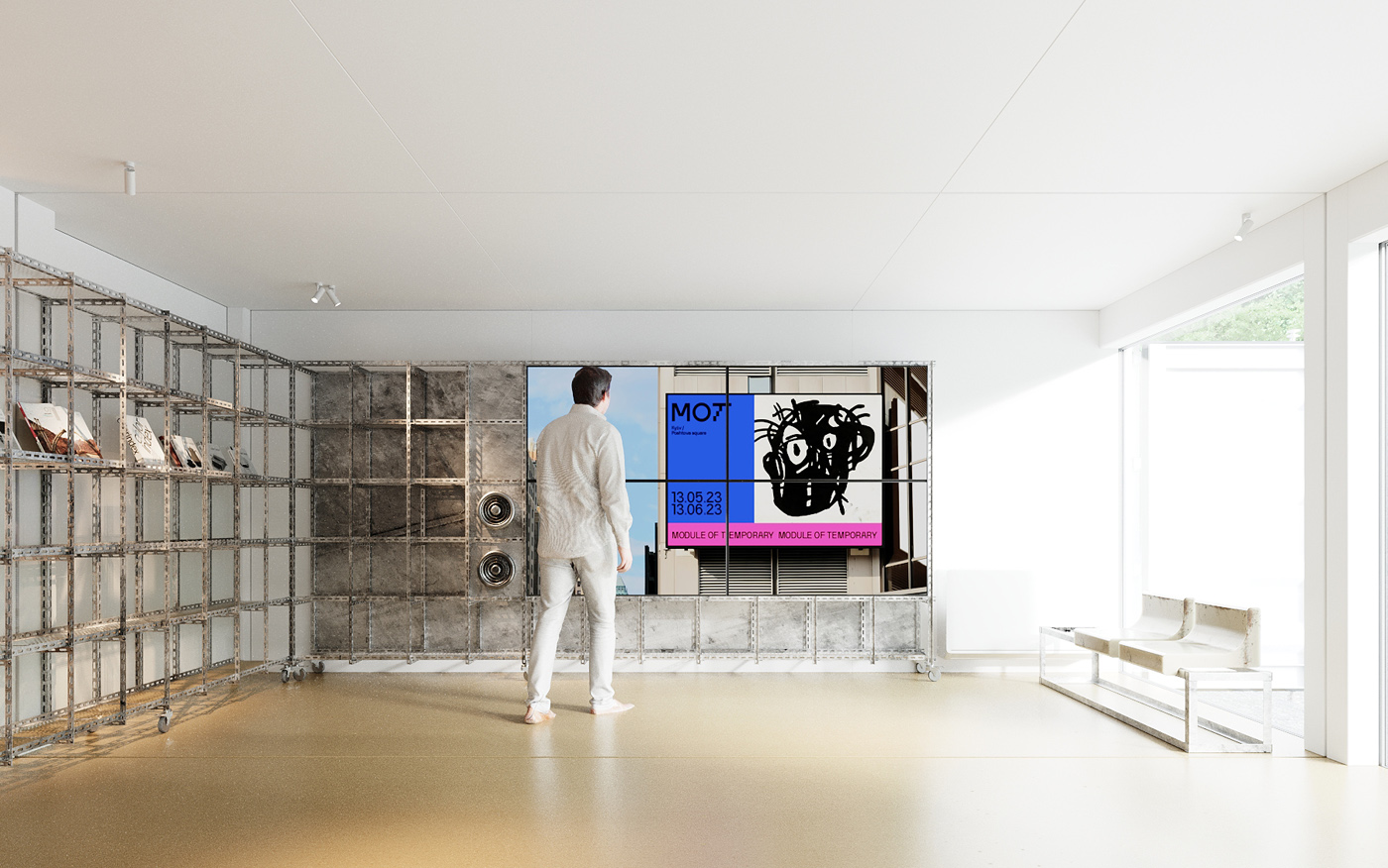
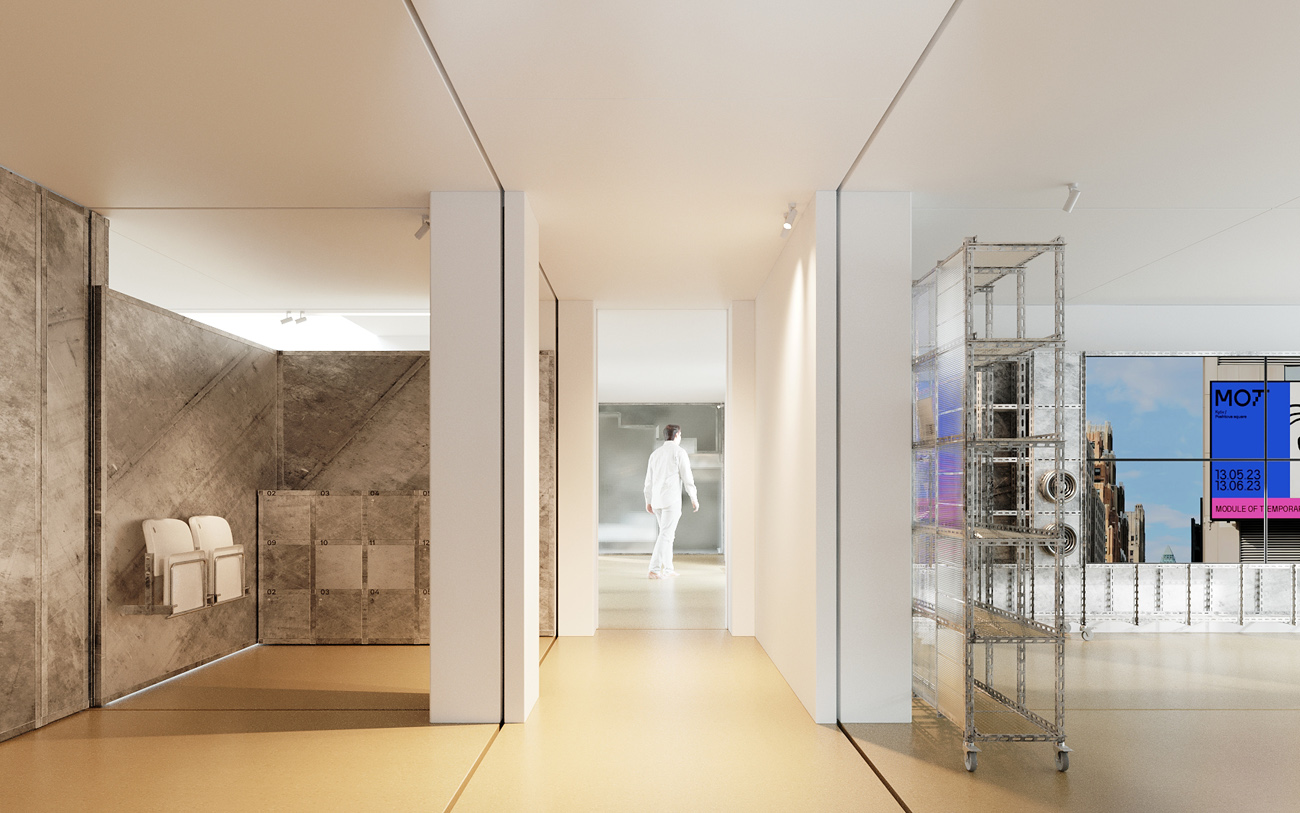

It was very interesting for me to work with a form that looks different on the outside than it does on the inside. Going into the spatial construction, you see a whole other dimension. The idea that you can put a museum in there again emphasizes how flexible they are. Of course, there are technical challenges of disassembling, moving, assembling. Increasing the height of the ceiling (balbek bureau and don’t Take Fake decided to increase the height of the containers. — Note from DTF Magazine), and placing everything so people feel comfortable is a huge engineering challenge. So it’s an interesting and challenging architectural and spatial solution, both 10 years ago and now.
In the MOT space, almost nothing has changed in terms of functionality. But together with don’t Take Fake, we are making an art space there. And it’s a very powerful concept, which in February will finally appear as a full-fledged project.
In eight months of work, balbek bureau in cooperation with the don’t Take Fake technical team transformed a set of containers into a full-fledged room equipped with independent lighting, heating, ventilation, and drainage systems. In particular, the interior and some of the furniture used sheet steel from the Mariupol ‘Azovstal’ and Illich Steel and Iron Works, which were destroyed in the battles for Mariupol.
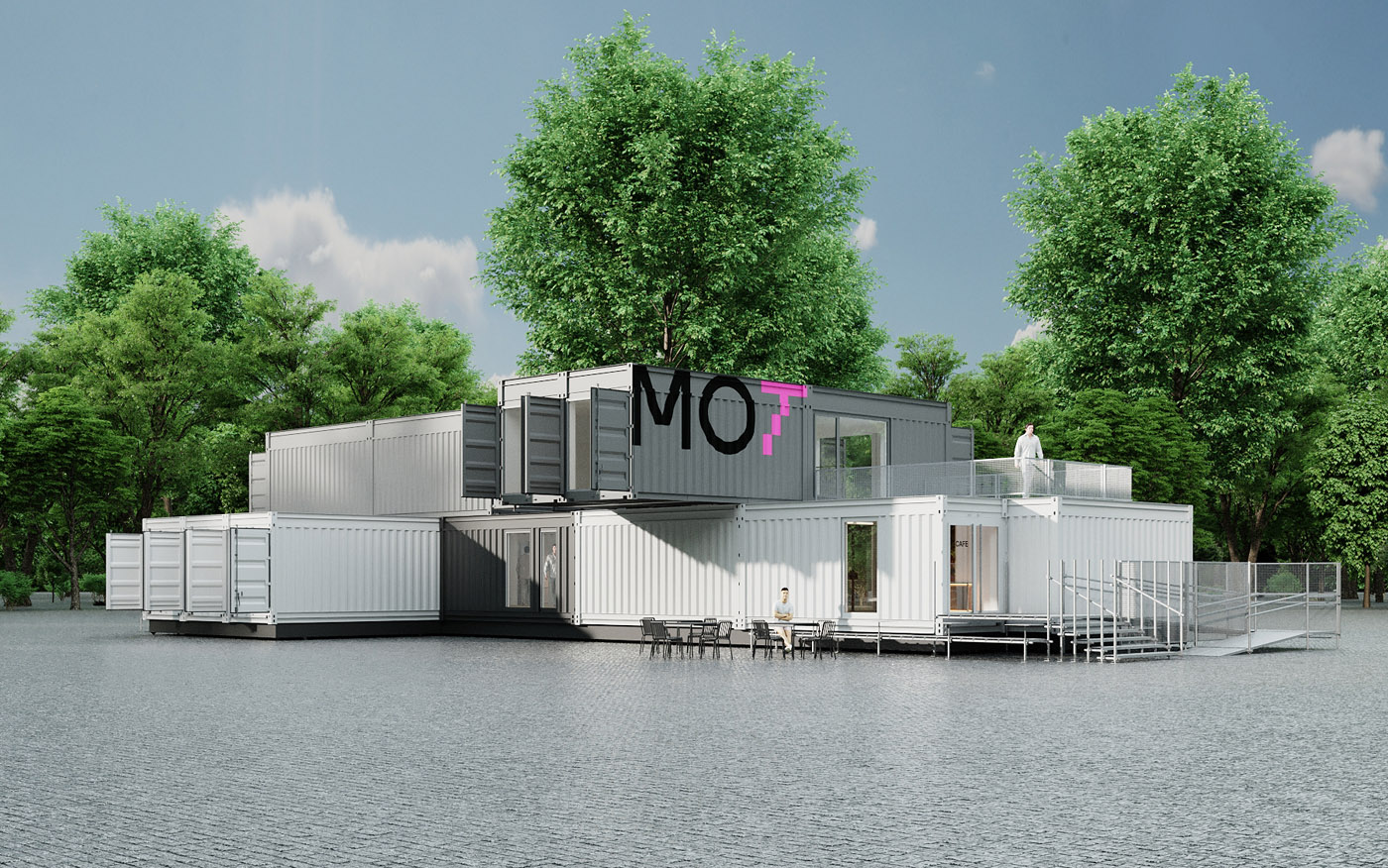
— Are there any special things in the design of this space? I know that the interior uses metal from Azovstal in particular.
— Yes, there are a lot of different things out there. There’s really everything created from local products. We wanted the materials to be from cities that have become war zones because of Russia — emotionally and energetically important materials for us. Namely metal from Azovstal, Bakhmut, chairs from bombed-out stadiums. There are a lot of messages there that we worked with.
— Can architecture and interiors draw the attention of people who are not interested in art to contemporary culture and art? That is, a person goes to a museum or gallery because he or she is firstly fascinated by architecture and then discovers art there.
— Yes, of course. One factor reinforces the other. It’s already such a small system that there’s no space, that it’s zero: there’s just a rectangle where you can get at least some art experience, and here is just a cool amplifying effect, where art draws attention to architecture, to design, and design and form draw attention to art . Actually, with MOT, it’s a win-win situation, because it can be transportable, because it’s just temporary and will give an emotional boost where it will be needed most. Mobility, the fact that the structure can be quickly transported to any location, city, country, is one of the most important features of the MOT concept.
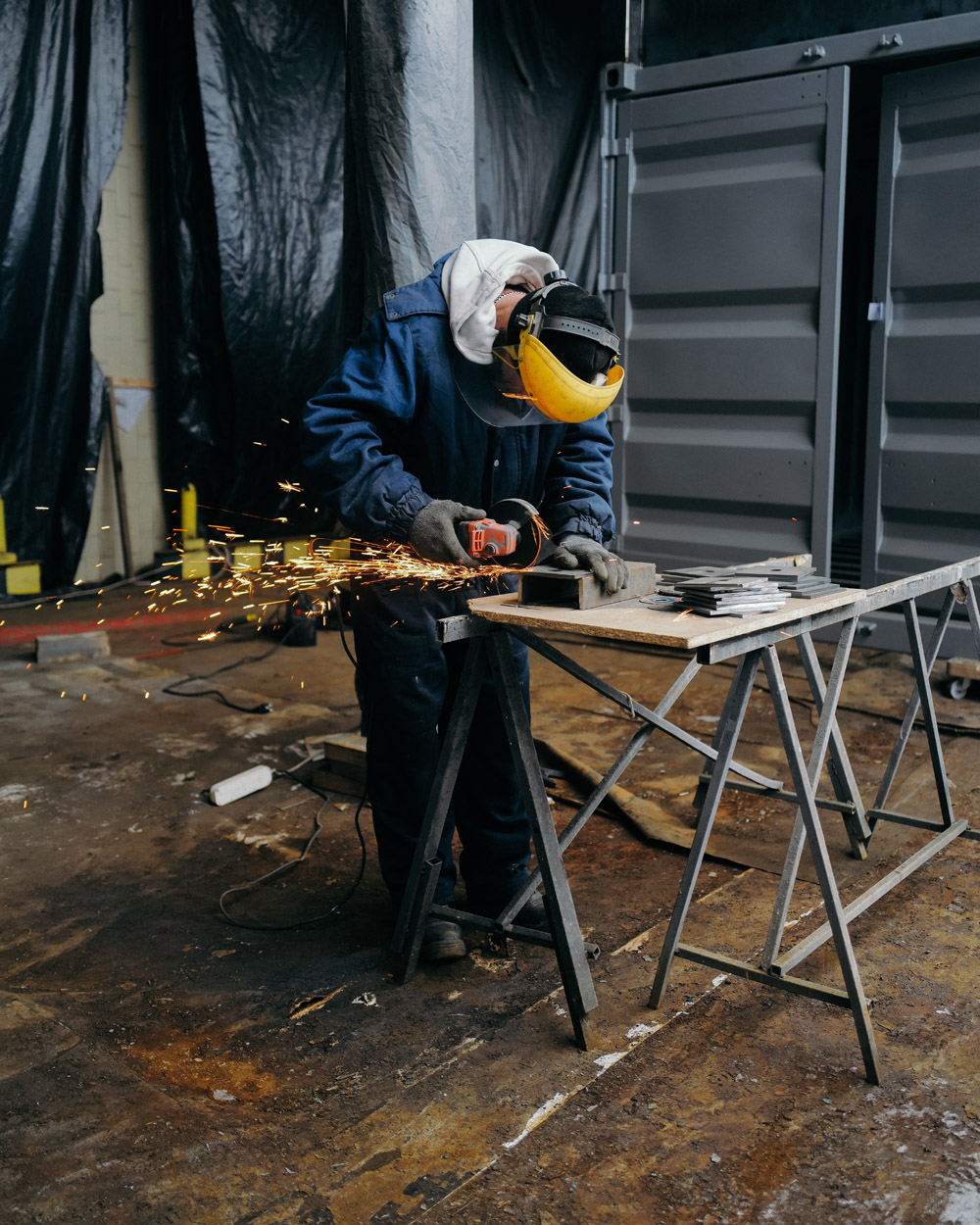
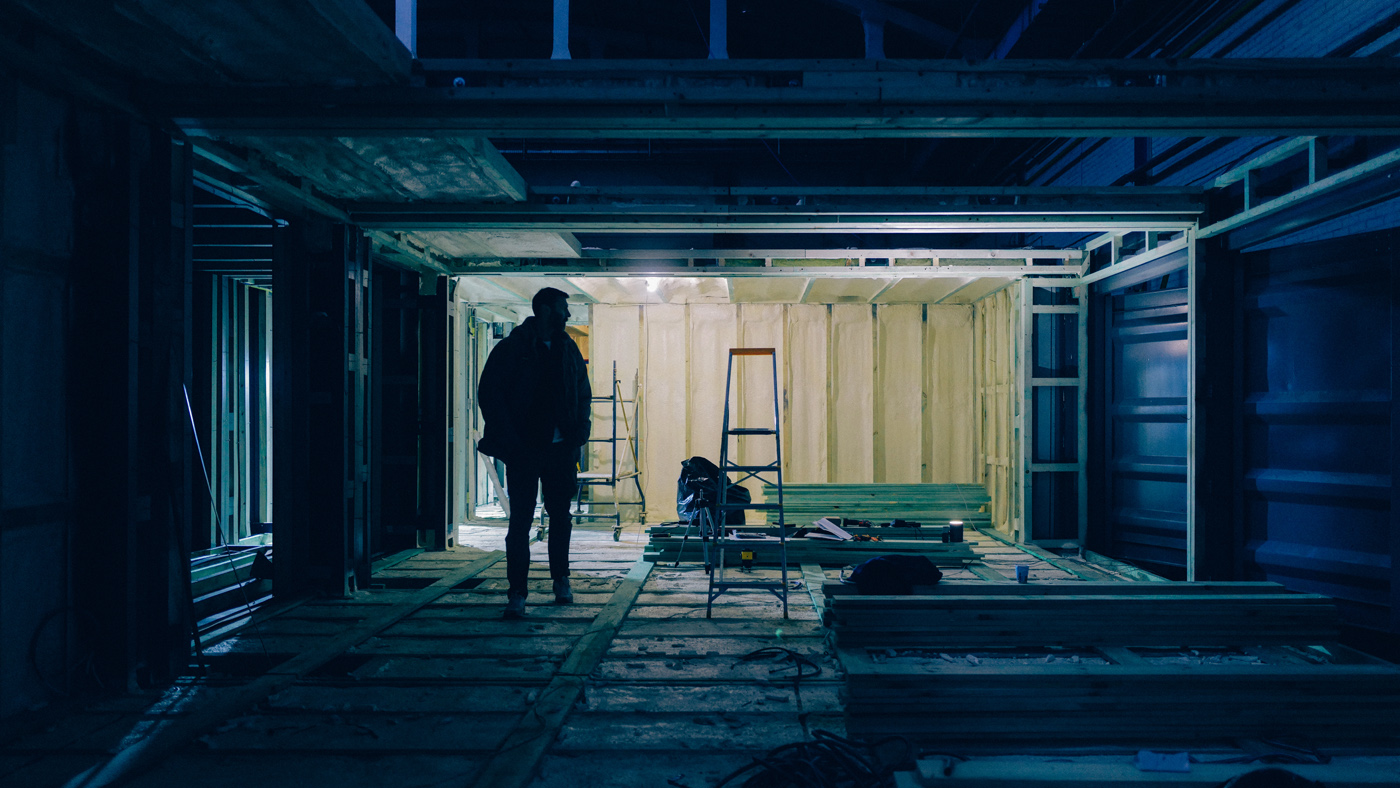
MOT construction. Photo: Vitalii Yurasov

The bureau’s most ambitious project and its new directions
— Which of the current balbek bureau projects do you consider the most ambitious?
— The most ambitious project was the creation of the department of social responsibility. It all started with the RE:Ukraine project, one of the directions of which was to create decent housing for internally displaced people. Now it is a multi-layered structure, a whole system of different directions, which we will be working on for many years.
RE:Ukraine is our most ambitious project, because it gave us the opportunity to feel useful at the level of the whole country. We believe in it and treat it as our role and mission.
— RE:Ukraine has three main directions: protection of monuments, creation of temporary housing, and restoration of villages. When did this come together into one project?
— We have Housing (creating housing), Villages (rebuilding villages), Monuments (protecting monuments), Memories (memorializing). These are the things we’ve already announced. Now we are working on Vision, forming our vision for the future reconstruction of Ukraine. We have not released this yet and we have not told anyone. There are three or four more directions among our plans, and we will begin as soon as we put the previous five into action.
It is the realization that this has to be an ecosystem on specific fronts that allows us to understand what link is missing in it. We focus on priorities. That is, what must be done first. We have to give the person the right place where they can feel safe and comfortable, to keep working. We gave that to the person, and we realized that we had to make it so that they could move on, they could rebuild. That led us to Villages. Then we realized that there was still something around the man that could be preserved, and we started working on Monuments. There is also something to honor, or understand how to honor it, and we began to develop the Memories direction.
— It is logical that basic needs come first, and then the rest. What stage is the Housing pilot project at right now? It hasn’t been implemented yet, right?
— Today we are at the stage of signing an agreement on the land issue in Vorzel (a village in Bucha district of Kyiv region. — Note from DTF Magazine’s comment). It will happen in the next few weeks, and from the first days of February we will start building. We have been working on the documents all this time.
— In one of your interviews, you said: “We have to fight the character trait that makes Ukrainians adjust to uncomfortable housing and tolerate it”. But isn’t there a risk that some people won’t just want to give up the housing conditions you create for them because they will be better than the ones they had before?
— Of course, there is a risk. And it is also a risk factor for us that it has to be taken into account. How do we make sure that a person, having received more comfortable conditions, is able to give this to the next residents who are waiting for an available place? People who either don’t have housing at all or are in even worse conditions. That needs to be explored. And it’s this pilot project that will make it possible to understand people’s attitudes about it.
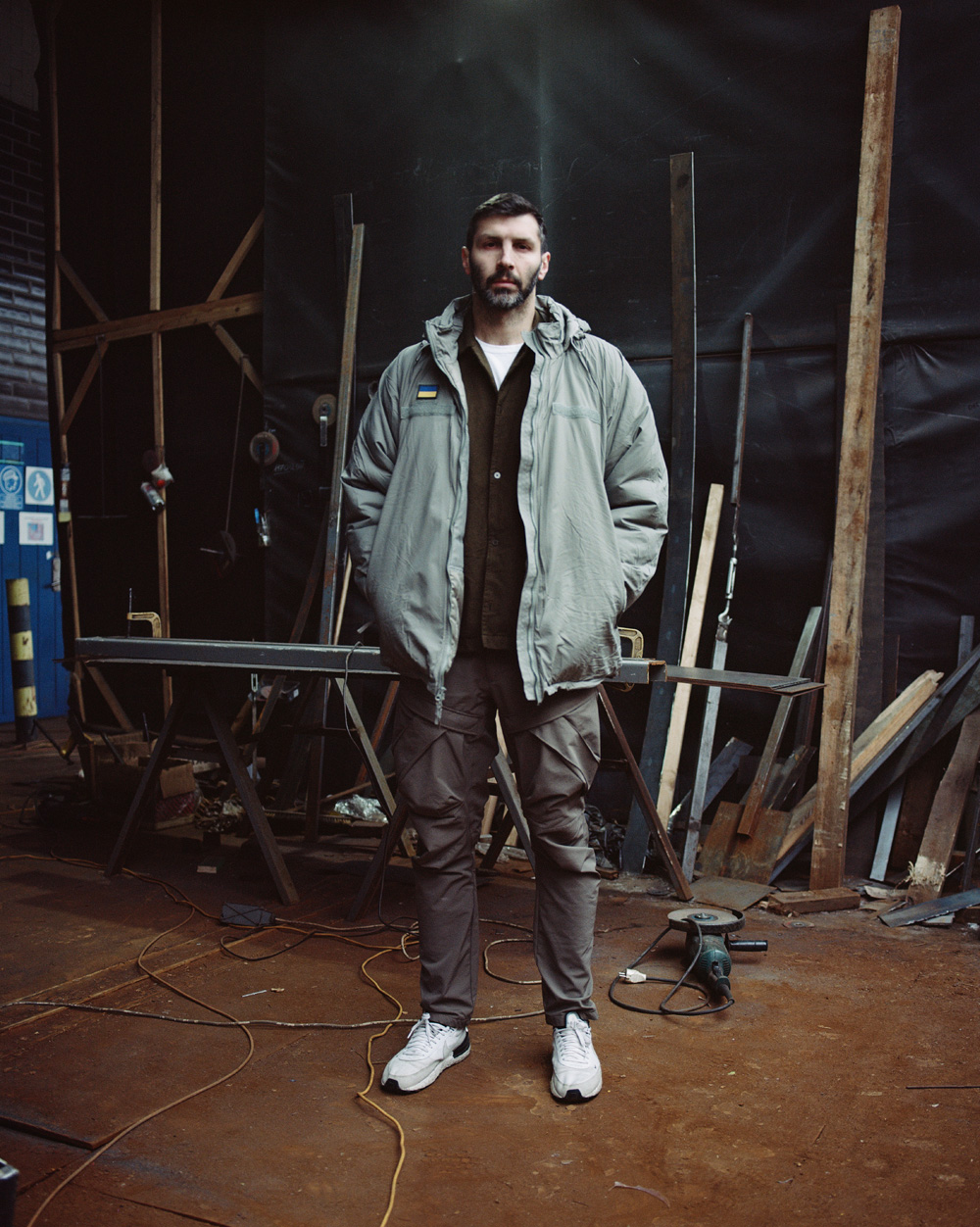
— And why, for example, instead of temporary, not build permanent housing complexes, even housing estates in areas remote from the front, in the west of Ukraine?
— I don’t know what is far from the front… Today, far from the front is outside Ukraine.
I’m not sure that the residents of the West will be happy with this. Firstly, they understand their community, value it, and value their independence, as do residents of other regions. And secondly, people who are forcibly relocated from one region to another feel like guests there. They feel more comfortable being at the place where they were born, grew up and live, where they interact with their friends, family, etc.
“Open Fracture” and foreign architects in Ukraine
— Let’s talk about the bureau’s other projects. Have you been able to fully resume work on what you were doing before the war?
— It depends not on us, but on our clients. Unfortunately, our workload has decreased a lot. Before, my team and I were 120% busy, and now we’re 85% busy. But the social initiative has helped fill in the gaps. We figure out for ourselves what to occupy our employees with. The only thing is that it is not the client who pays for it, but the bureau from its own resources. But the main thing is that people are busy and believe in what they are doing. They believe they are working for the good of the state. This belief allows us to pay for this time.
— “Open Fracture” is a project for a memorial site in Irpin. There was a lot of news about the Ministry of Culture holding public discussions and inviting people to join them, but I couldn’t find any information whether it had been approved. Will it be realized?
— We were at the public hearings and discussions. Now we stopped at the question of who can be the customer of the memorial in Irpin, if it will be built at all or if someone will hold a tender, who should form the terms of reference.
“Open Fracture” was only our architectural reflection, which has yet to be supported by a large initiative team from the perspective of the meanings it carries. For us, the release of this project is an analytical work on what is happening in general in today’s society regarding memorialization. How much it still hurts, how fragile it is, how we should behave under such conditions.
We kind of went for broke and got very strong feedback, both hate and support. Not everyone can project, predict their vision years in advance. Not everyone can not take the decision in the context of today, but try to make a projection of that vision five years from now, when we have rebuilt everything. Not everyone understands that this “Open Fracture” in its current form will not be part of the great destruction of the whole Kyiv region, but part of the war, which will be a reminder of it when everything has already been rebuilt. I need to explain every time what the mission of this project is in general.
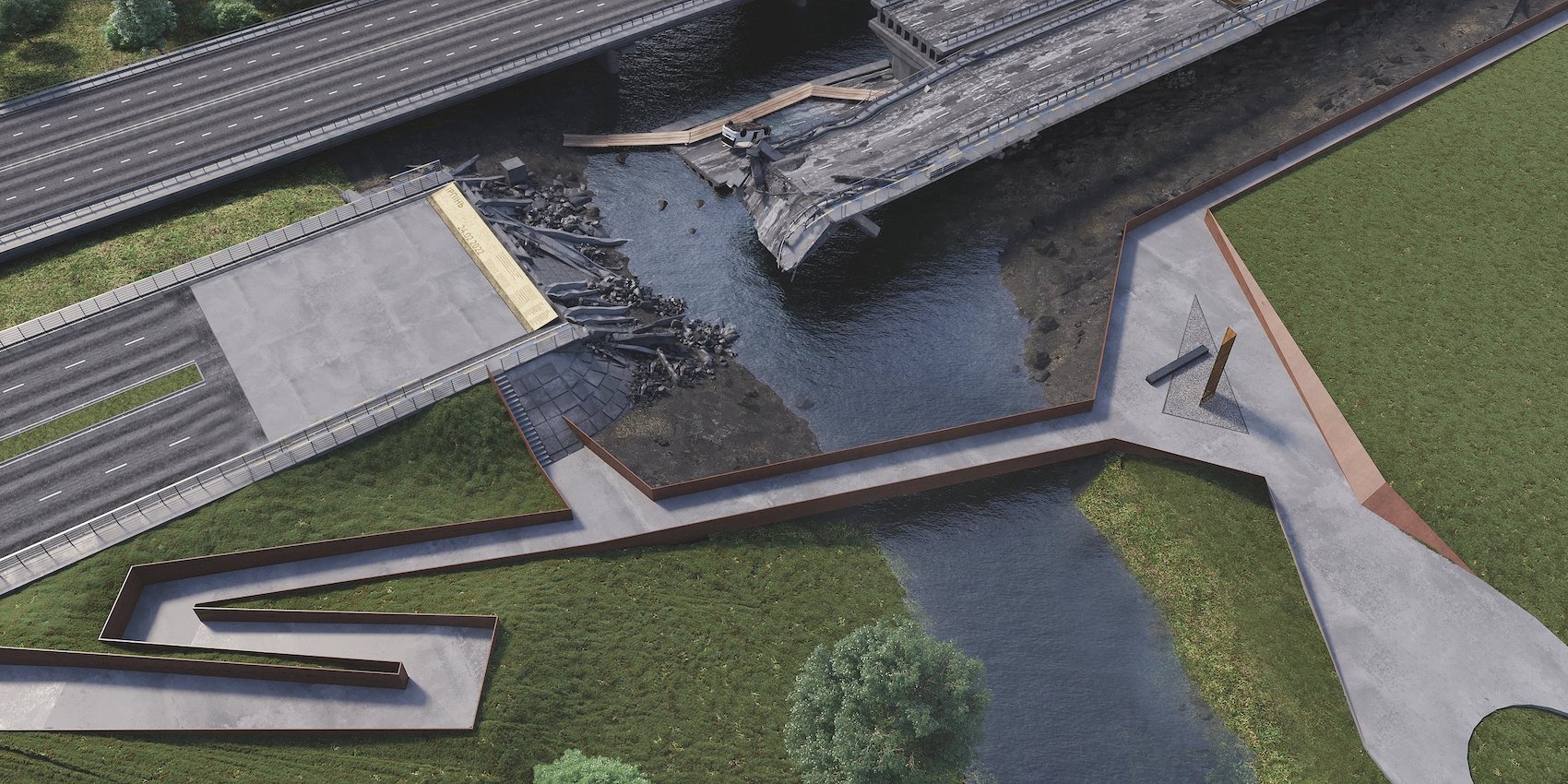
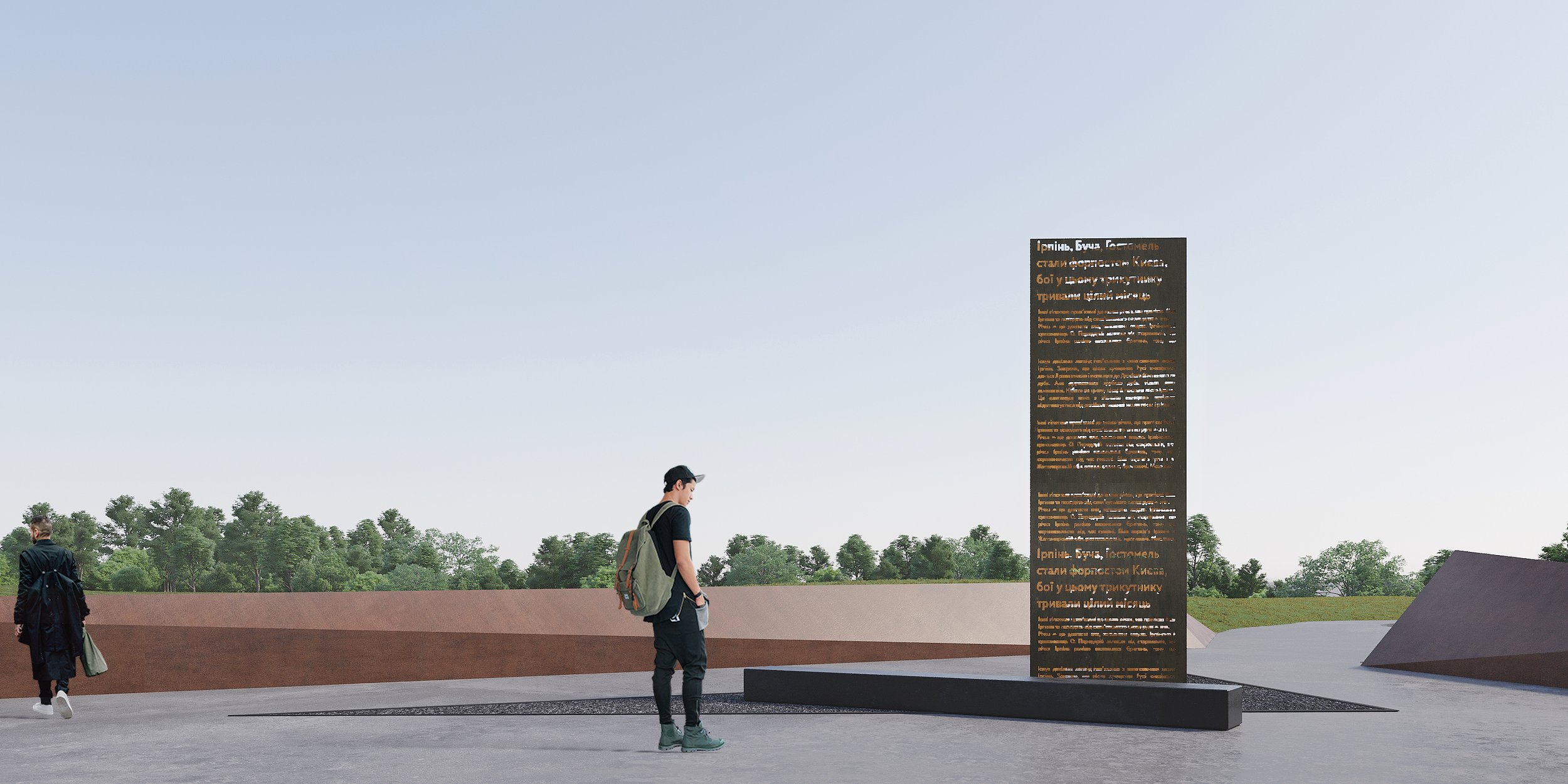
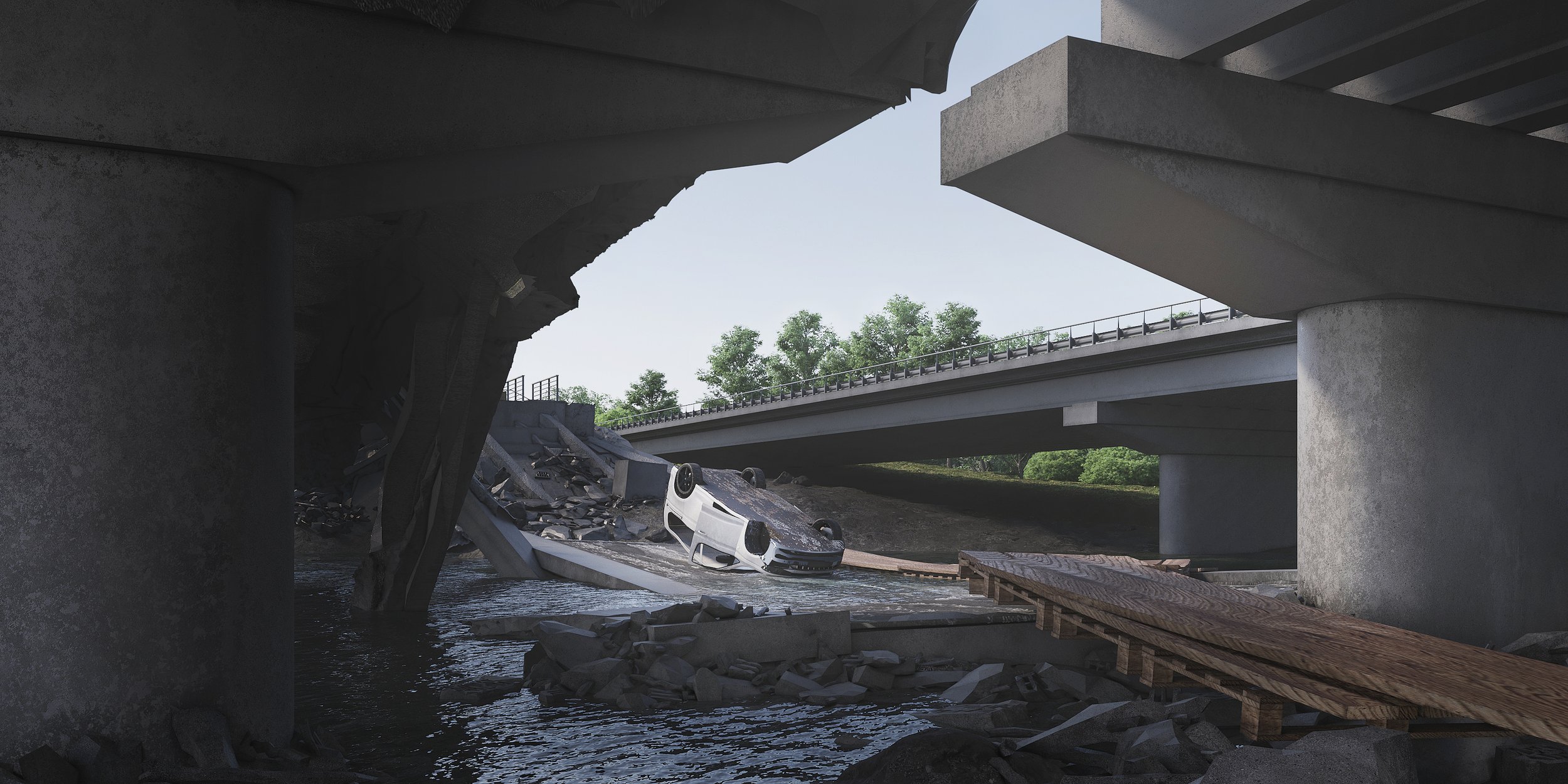
— It’s interesting to ask about emotionality. Why you chose this particular approach — about “lived experience”, about preserving it in its original form. I think for many people, for real people, this is a place of great tragedy…
— And for many people it is not a place of tragedy, but a place of victory, a place of indestructibility. A place of salvation, a place of gratitude. It is the place where they felt their strength.
It all depends on how you look at it. For someone it is a tragedy, and for someone it is a victory. This is a turning point in society, a turning point in events, and therefore the question of the meaning you give to a project decision is very important here.
You talk about tragedy, and I talk about people becoming indestructible after that tragedy. Just contemplating this architectural edifice, you can grasp very different meanings.
— To restore Ukrainian cities they attract foreigners, and you’ve already talked about this. There was an interview with a quite critical headline about Kharkiv and the Norman Foster Foundation, which recently presented its master plan. But do you think that foreigners create competition for Ukrainian architects? Do you feel it?
— I believe that foreigners do not create competition for Ukrainians, because Ukrainians have the desire and ability to help. And we also own every square meter of Ukrainian land, where, having put forward our proposal, we can prove ourselves. It is more difficult for foreigners, because they are not in context. They don’t understand the principles and values of Ukrainians. But the fact that they come is super cool. It’s further proof of how empathetic they are. That’s why Norman Foster came to Kharkiv recently. I saw a picture, and it’s awesome.
Everyone has their own vision of their land. Even Ukrainian architects are sensitive to the fact that architects from Kyiv work for Kharkiv and architects from Kharkiv work for Lviv. But this is emotion, and here we should consider efficiency.
Why should people invest in the development and redevelopment of Kharkiv? What to do with the Kharkiv region? And why exactly with it, and not, for example, with Zaporizhzhia? These are the questions that are very difficult to answer. The more specialists, initiators and architects from all over the world will be involved, the more it will be a trigger for Ukrainian architectural community. And it will react and present its vision.
Our international colleagues do not have the experience that Ukrainian architects have — I mean the work and reconstruction during the war. None of them have experienced the kind of events that we are experiencing now. We have more information, we are more in the context of offering solutions. We understand our own society. Foreigners, on the other hand, can only do analysis and offer something based on certain statistics that they ask for and receive. But this is a foreign vision of the Ukrainian context.
— So you think that Ukrainian architects are more effective in rebuilding their own cities?
— I did not say that the Ukrainians are more effective. I would say that they would be more accurate. They can formulate the terms of reference more precisely and concretely and determine exactly what the Ukrainians need. And how effectively or ineffectively they accomplish this task depends on their experience and willingness to help.
— One last question. How do you manage to balance bureau management, your own institutions, and service in the Armed Forces of Ukraine?
I am not in the Armed Forces — I am a military volunteer. I have a volunteer contract, and these are different things, different levels of access, different degrees of freedom.
I don’t see it as separate processes — for me it’s the only holistic life. Work and volunteering, military volunteering, my free time, sports — it’s just the way I go. The balance of these things makes me feel comfortable.
If all the time I was either just working, or resting, or being on the front lines, then it would feel imbalanced — and I don’t know where that would take me. I would lose effectiveness very quickly because of that. I need balance.


